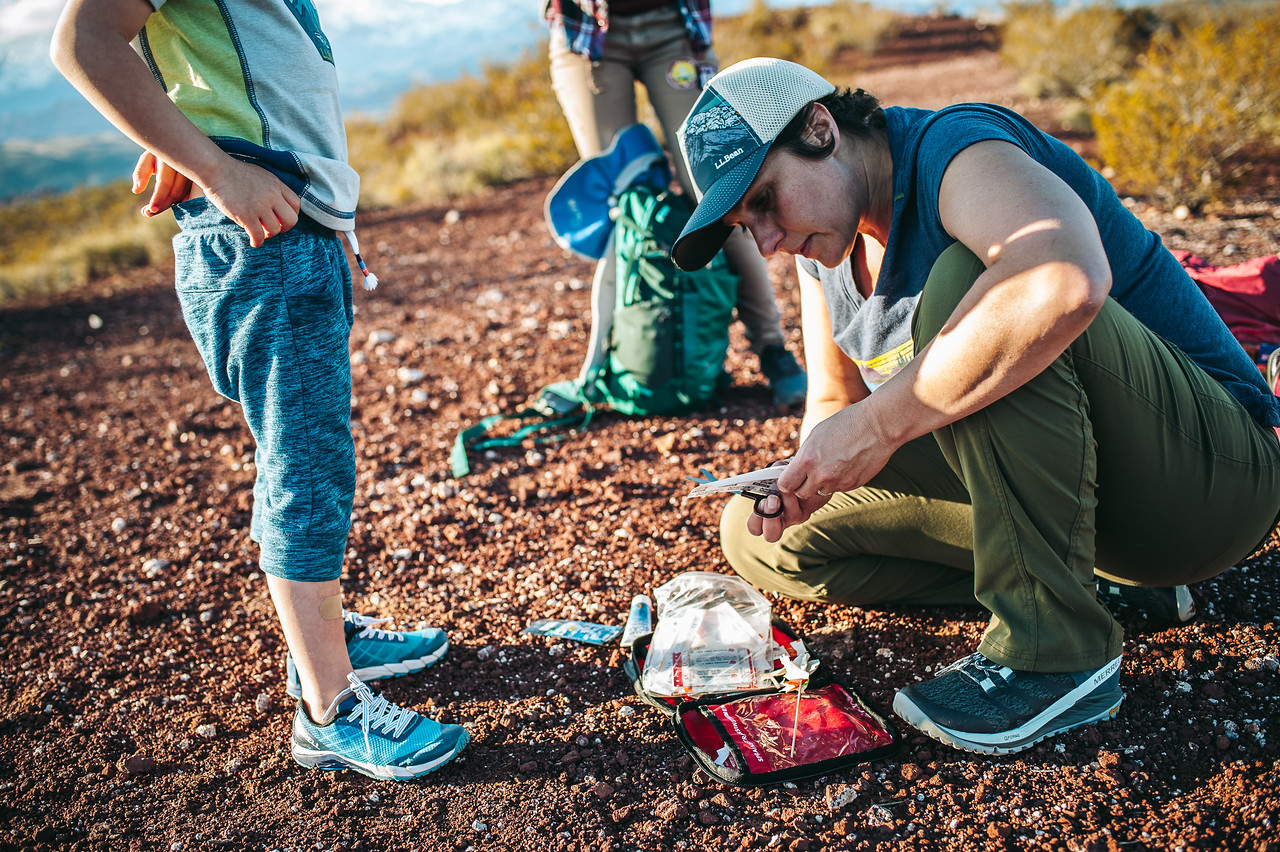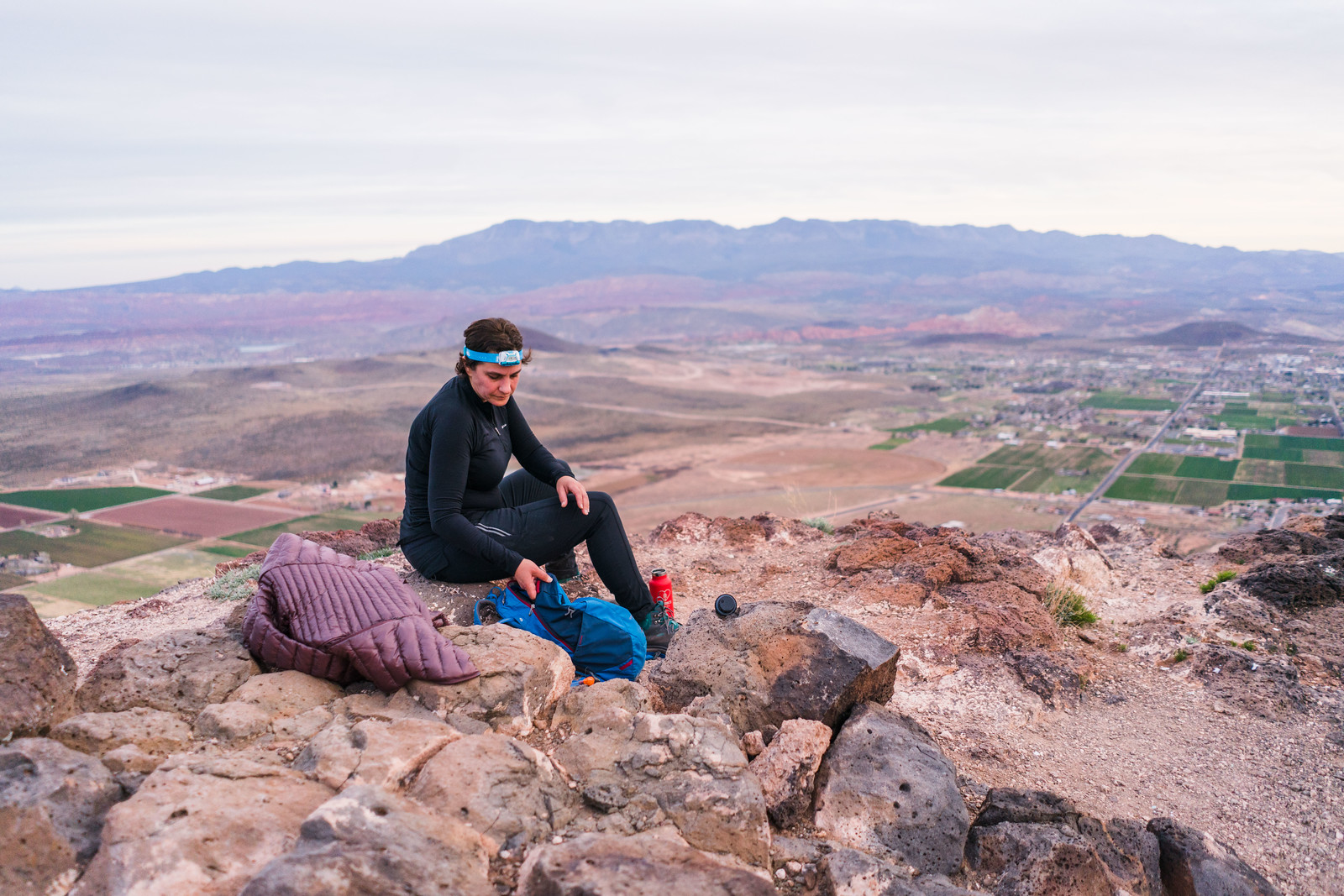What to in pack your medical kit for the trail
When Benjamin Franklin famously said “An ounce of prevention is worth a pound of cure,” he was advising his fellow Philadelphians in regard to the dangers of fires in the city. That 18th Century adage is just as true today as it was first uttered almost three hundred years ago.
Regardless of whether you’re adventuring alone in the backcountry or with a myriad of little ones in tow, a little prevention can go a long way. Being prepared for the unexpected can pay dividends in the long run. Whether you’re going for a day hike, a weekend backpacking trip or an extended backcountry expedition, a first aid kit should always be in your pack. The essentials are the same for a day hiking first aid kit as for a multi-day adventure. The quantities also increase for longer trips.
 And while you can build your own kit from scratch, it can get quite pricey to piecemeal together all the necessities that you can get in a pre-packaged first aid kit. Companies like Adventure Medical Kits have an array of kits specifically designed for hunters, travelers, adventurers and even for your four-legged trail companion.
In reality, the biggest concern for a parent on the trail will be the occasional cut or scraped knee, a splinter, blister, minor burn or even perhaps a bee sting or a tick. These are all things that you have likely had to deal with at home or on the playground. The only difference will be that instead of sorting through the bathroom cabinet for supplies, you will have to dig out the trusty kit from your pack.
And while you can build your own kit from scratch, it can get quite pricey to piecemeal together all the necessities that you can get in a pre-packaged first aid kit. Companies like Adventure Medical Kits have an array of kits specifically designed for hunters, travelers, adventurers and even for your four-legged trail companion.
In reality, the biggest concern for a parent on the trail will be the occasional cut or scraped knee, a splinter, blister, minor burn or even perhaps a bee sting or a tick. These are all things that you have likely had to deal with at home or on the playground. The only difference will be that instead of sorting through the bathroom cabinet for supplies, you will have to dig out the trusty kit from your pack.

 And while you can build your own kit from scratch, it can get quite pricey to piecemeal together all the necessities that you can get in a pre-packaged first aid kit. Companies like Adventure Medical Kits have an array of kits specifically designed for hunters, travelers, adventurers and even for your four-legged trail companion.
In reality, the biggest concern for a parent on the trail will be the occasional cut or scraped knee, a splinter, blister, minor burn or even perhaps a bee sting or a tick. These are all things that you have likely had to deal with at home or on the playground. The only difference will be that instead of sorting through the bathroom cabinet for supplies, you will have to dig out the trusty kit from your pack.
And while you can build your own kit from scratch, it can get quite pricey to piecemeal together all the necessities that you can get in a pre-packaged first aid kit. Companies like Adventure Medical Kits have an array of kits specifically designed for hunters, travelers, adventurers and even for your four-legged trail companion.
In reality, the biggest concern for a parent on the trail will be the occasional cut or scraped knee, a splinter, blister, minor burn or even perhaps a bee sting or a tick. These are all things that you have likely had to deal with at home or on the playground. The only difference will be that instead of sorting through the bathroom cabinet for supplies, you will have to dig out the trusty kit from your pack.
Get to know your medical kit
First thing you want to do after assembling your kit is to get acquainted with it. Don’t let the first time you glance at your kit be when that first scrape or cut happens on the trail. Second, take a class. Nothing replaces knowledge. You can have the best first aid kit but only if you’re adept at using it. There are numerous options for increasing your comfort in wilderness medicine. Check with your local outfitter, nearby college or for opportunities online for wilderness first aid courses. There are also advanced options that include multi-day courses like Wilderness First Responder certification. In addition to the essentials contained within your kit, here are a few other items you should add to your kit to prepare for the inevitable adventures of your little explorers.Band-aids for kids
Adhesive bandages in most first aid kits are of the adult variety. They are boring and won’t provide emotional support once applied. Most minor scrapes and cuts aren’t life-threatening and only a few actually require immediate attention. However, applying a kid-appropriate band-aid (princesses, super heroes, etc.) can go a long way in improving the situation.Age-appropriate medications
The medications contained in most pre-packaged kits are made for adults (and kids over 12 years). Pack pediatric doses of ibuprofen (i.e, Advil) and acetaminophen (i.e., Tylenol) for fevers and pain relief. Whether you choose to bring along the pill or liquid versions, make sure to also include dosing instructions.Antihistamine
Even if your kids don’t suffer from major allergies, it’s still a great idea to stock an antihistamine away for emergencies. Benadryl for kids comes in liquid, chewable tablets and strips that dissolve in their mouth.Prescription medicines
It goes without saying that you should pack any prescription medications that you or your kids take regularly. However, what you may not have considered is that you should carry twice as many and consider keeping in several locations in the event that an accident occurs and one supply takes a swim in the creek or gets dumped over around the campfire.Stomach relief
Loperamide (i.e., Imodium) is what is commonly found in pre-packaged kits. It’s too strong for kids under 12, so add a few chewable Pepto Bismol tablets for treating diarrhea.Digital thermometer
Some kits contain a thermometer. If not, add a digital thermometer to your kit in case of a fever and before administering any medications.Additional tools
Splinters are common in active kids and adding a pair of tweezers and a small needle can be advantageous in the field. Tweezers are also great for removing embedded ticks. Consider packing a headlamp if it’s not already part of your overnight gear.
Epinephrine auto-injector
Anaphylaxis is a real threat if you or your progeny suffer from serious allergic reactions. It’s likely that if you know of this threat, you already carry an epinephrine auto-injector (i.e., EpiPen) in your home, purse and car. Go ahead and stash another set into your first aid kit and never head down the trail without it. If you don’t know whether you or a member of your crew is at risk, it never hurts to get a prescription from your family doctor and stash an extra one in your kit.Emergency communication
A cell phone is great unless you are out of range. If you're planning an extended backcountry trip or to be off the grid, consider an emergency beacon like SPOT or a satellite device like the Garmin inReach. Both have SOS capabilities and Search and Rescue will be notified if initiated. Depending on the length of your trip, consider packing a battery pack to recharge as needed. Now that you have an extensive list of what to have in your first aid kit, get your kit stocked and packed and hit the trail! What other medical supplies do you carry that we haven't mentioned? Please share with us in the comments below!Read more:
Photos by Michelle Craig and Arika Bauer.Related Content




Comments